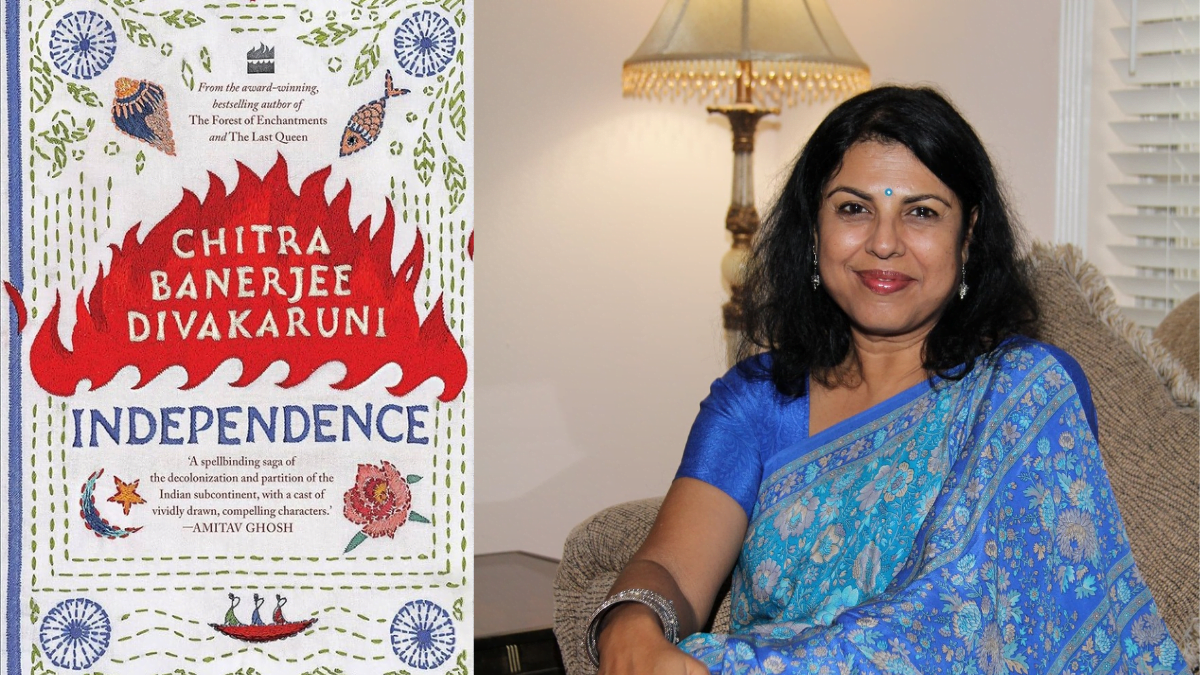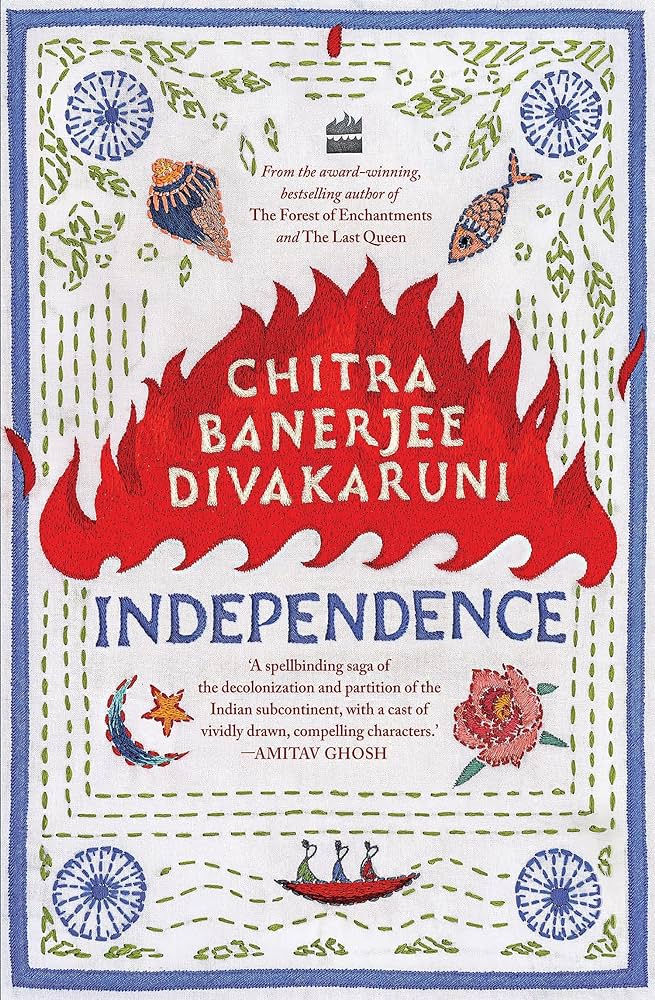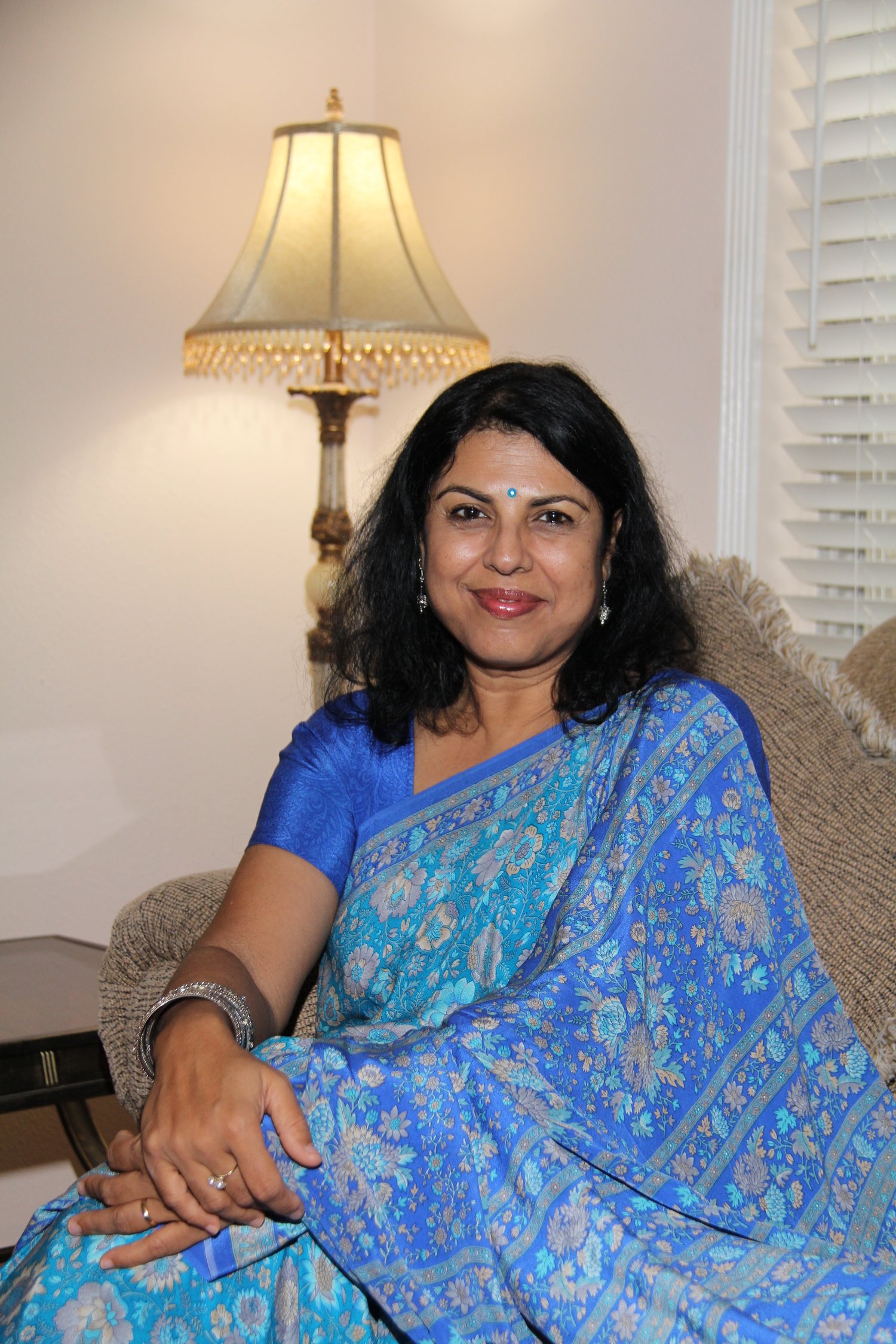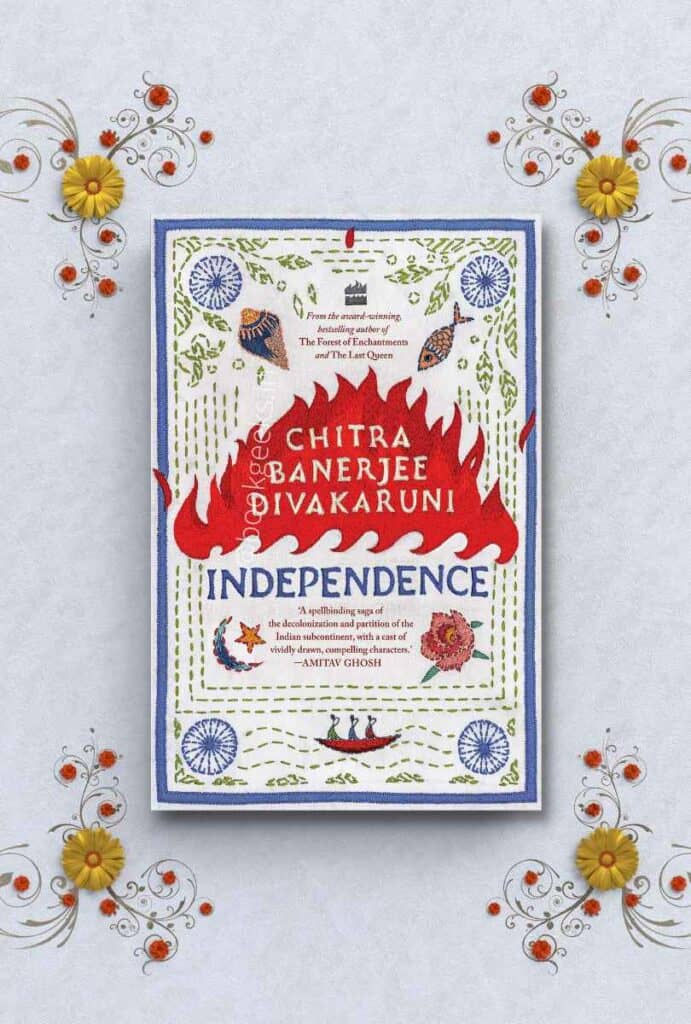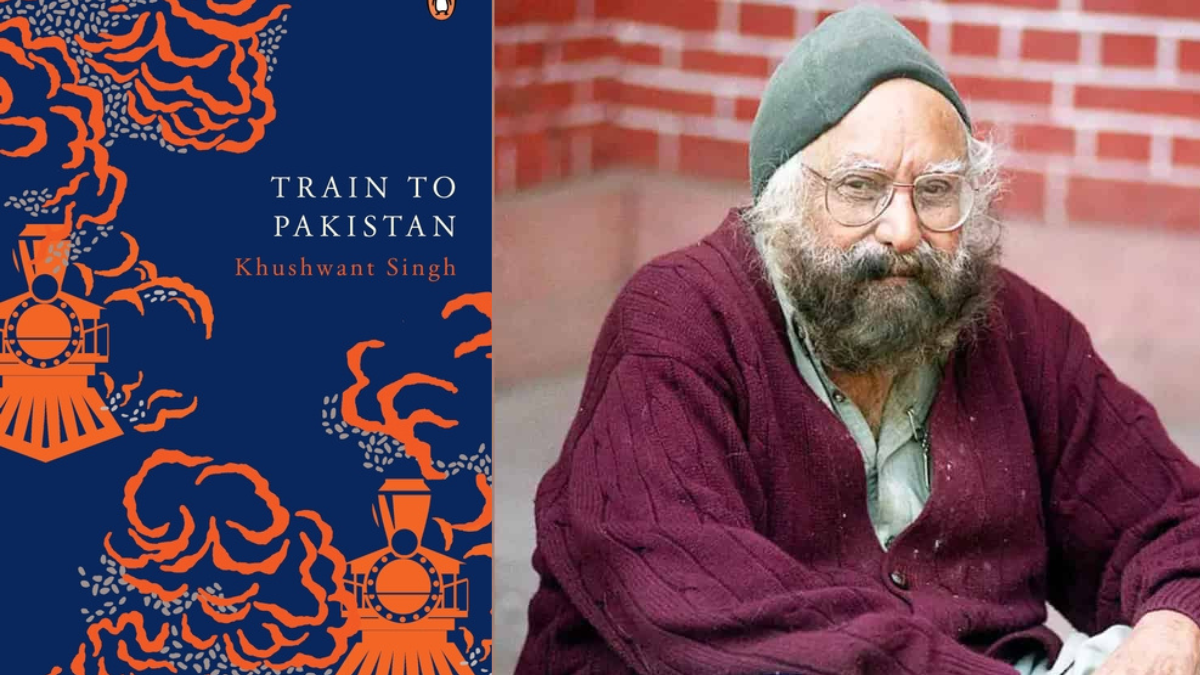Chitra Banerjee Divakaruni is known for captivating and engrossing her readers in a whirlwind of her entrenching works that engulf the psyche into the depths of inventiveness and impactful journeys of her characters. Independence is one of the most noteworthy works of the author that narrates the gut-wrenching narrative of sordid liberation and the price that costs the lives of those yearning for freedom.
The author depicts love and conflict, the sublime and the repulsive. But the story’s arc leans in the direction of hope.
The author depicts love and conflict, the sublime and the repulsive. But the story’s arc leans in the direction of hope. Chitra Banerjee Divakaruni’s Independence evokes a sense of familiarity as she vividly describes scenes of violence that blur the line between past and present. Through poetic language, the book depicts the emotional turmoil of a time marked by tragedy and conflict. The story explores themes of hatred, bravery, and social unrest, resonating with current events. In simple yet powerful writing, the novel teaches important lessons from history
The plot of Independence
Independence takes place in a rural village in Bengal during the partition of India and follows the stories of three sisters, Priya, Deepa, and Jamini, who are the daughters of the village doctor, Nabhkumar. Deepa, the oldest and most attractive sibling, is determined to improve her family’s social standing and happiness by marrying into a respectable family. Jamini, the most detail-oriented member of her family, is highly observant and intelligent but tends to go unnoticed. She helps her mother with their quilting business, which they use as a source of additional income.
Despite her strong passions and intensity, Jamini keeps her innermost wishes to herself. Priya, the youngest of the three siblings, is also the most intelligent. She dreams of becoming a doctor like her father, despite societal disapproval due to gender norms.
After their father Nabhkumar is killed during a riot, their once happy and protected family is shattered, leaving them alone and facing hostility from even their neighbours. All three sisters experience sudden and significant changes in their lives as they are suddenly affected by events occurring in the country. Priya is focused on achieving her career goals and following her father’s path, while Deepa’s relationship with a Muslim man causes tension in her family during a time of political unrest in the country. Jamini is left to care for her family on her own, trying to maintain stability while also harbouring a desire for her sister’s fiancé.
The division of India into separate countries for Hindus and Muslims has been officially decided, with India for Hindus and Pakistan for Muslims.
The division of India into separate countries for Hindus and Muslims has been officially decided, with India for Hindus and Pakistan for Muslims. The three sisters have been pulled apart by fate, each following their separate path and leaving their once close-knit family fragmented and uncertain of each other’s lives. Is there a possibility that the three sisters will come together again in the future? When one sister is in trouble, will the others come to her aid and what will be the consequences of their help? Will they be able to help in time?
The nuances and the intricacies of the plot
In Independence, Divakaruni immerses the reader in a country going through a tumultuous period of change, with three sisters facing their struggles and conflicts. Despite their differences, they ultimately come together to support and protect each other as they navigate the challenges of a country in turmoil. Despite the sadness and hardship, there is a ray of hope for Priya whenever she sees or hears Sarojini Naidu. Meeting her idol expands Priya’s perspective, and she cherishes Naidu’s words.
Divakaruni’s novel Independence captures the period of 1946-1954 with the same detail and emotion as her previous works. The story draws readers in with its mesmerising world and poetic style, adapting to the fast-paced changes of the era. The narrative is engaging and in some parts, lacks commas to create a sense of urgency and excitement. The chilling description of communal fires destroying a country in turmoil is mirrored in the difficult birth of a fisherman’s child, symbolised by the umbilical cord suffocating him.
Divakaruni explores the complex bond between sisters and showcases the bravery of everyday people. She also highlights the presence of goodness in the world, despite the surrounding cynicism. Nabakumar Ganguly is seen as a shining example of goodness for his selfless work as a doctor treating poor patients for free. His altruistic actions support the nation and its less fortunate citisens. His wife, Bina, becomes emotional when he reminisces about his involvement in Gandhi’s Salt March. Divakaruni questions the impact of men’s heroic actions on the women they leave behind.
Emancipation and its expense in Independence
The three sisters become distant from each other as a shadow hangs over their country. Priya is studying in a medical college in America, Deepa is involved with Raza and the Muslim League, and Jamini stays with their mother. Jamini almost becomes a victim of sexual assault during a communal conflict. Nabhkumar dies during the riots on Direct Action Day. His final words, ‘Take care of each other,’ hold significant meaning amid communal violence.
Nabhkumar dies during the riots on Direct Action Day. His final words, ‘Take care of each other,’ hold significant meaning amid communal violence.
Divakaruni conveys a powerful message in a simple manner in Independence, similar to the intricate quilts made by Jamini and Bina. The narrative is woven with songs and vibrant music of the era. The narrativeof Independence is filled with patriotic spirit as a combination of Nazrul Geeti and Rabindra Sangeet is sung, culminating in a joyous rendition of Bankim Chandra Chattopadhyay’s ‘Bande Mataram’ just before midnight.
The celebratory atmosphere grows as the song echoes through the streets, symbolising the arrival of freedom. In Independence, Divakaruni expertly weaves a tale of freedom, love, and struggle, showcasing both the beauty and the challenges of life.
As the story reaches its climax with Gandhi’s assassination, the reader is moved to tears. Despite the heartbreak of a grieving nation, there is a sense of hope as Priya achieves her dream of becoming a doctor and honouring her father’s memory. She chooses to remain single and independent, rejecting offers of marriage. Even after finishing the novel, you are left with the lingering thoughts of the postscript which describes the elements of time, memory, the world, and the present moment. It prompts you to think about how you will make use of the current year and your place in the world. The question is very important and Divakaruni encourages the reader to come up with their answer.
Final thoughts
Independence is a well-written story that is told from the perspectives of all three sisters. The author’s use of prose in each scene draws readers in and allows them to vividly imagine and feel the story unfolding. She is a skilled storyteller, and once you begin reading her work, you will be captivated and unable to put it down. The storyline is thoroughly researched, particularly regarding the political turmoil in Bengal during that period. It strikes a good balance between fiction and historical facts, without being too overwhelming in its historical context.
The inclusion of short poems in Bengali with English translations effectively captures the emotions of the characters. The characterisation of each sister is well-developed, showcasing their personalities and growth throughout the story. Each sister is distinct and multi-dimensional, adding depth to the reading experience.
As a reader, you find yourself cheering for all three characters at different points in Independence, despite their reckless and careless actions.
As a reader, you find yourself cheering for all three characters at different points in Independence, despite their reckless and careless actions. The emotions of despair, anguish, uncertainty, hope, and love are portrayed in a compelling way that lingers with you even after finishing the book.
Independence starts slowly, with a thorough explanation of the history and background before diving into the main events. The climax, on the other hand, felt rushed and could have been more developed to provide a more satisfying conclusion. The book seemed to cater more to Western audiences, with some situations being exaggerated from the perspective of an Indian living during that period. Despite its flaws, Independence is a compelling and entertaining book that is recommended to anyone interested in reading a story set during the partition of India.
